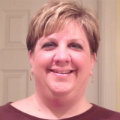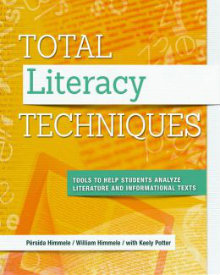Good Tools for Analyzing Fiction and Nonfiction
Total Literacy Techniques: Tools to Help Students Analyze Literature and Informational Texts
By Persida Himmele, William Himmele and Keely Potter
(ASCD, 2014 – Learn more)

One of the first things that the authors do in this wonderful book, Total Literacy Techniques, is to acknowledge and underscore that there is a true difference between the language that we speak and the language that we read.
They also point to the clear difference between the language used in fictional works and the language used in informational texts. Their point is well taken; not all language is created – or used – in an equal way.

Sorting out the fiction and non-fiction challenges
One of the most challenging things for any teacher to teach effectively is vocabulary, simply because of its breadth. This book addresses the complexity of helping our students as they work to conquer, rather than be conquered by, academic language.
As the authors wisely put it:
Informational texts have less time to present a meaningful context. They are often brief and extremely focused in their intent. Informational texts are also loaded with the types of words that students would consider to be difficult words. But while great stories allow students to hang comprehension of more difficult unknown words on known words and the contexts surrounding them, informational texts are rarely able to do that.
We all love stories, especially those that are well told, with rich language and powerful imagery. Because our students are often able to get lost in a fictional work, the process of understanding the vocabulary they encounter is helped along by the joy of the story unfolding as they read. But with isolated informational non-fictional passages (such as those given on end of year and end of course tests), students don’t have the joy of getting lost in a story as they face the challenging vocabulary, and so they must find other ways to understand the passages they encounter.

The Himmeles
In this book, the Himmeles quote Stephen Krashen as saying that language is “too vast, too complex, to be taught or learned one rule or word at a time,” and the authors build the case throughout the book that students must be allowed to surround themselves with the language that we are expecting them to learn.
We must present our students with innumerable opportunities to read self-selected material as well as to listen to books being read aloud, both by us and others. When they hear and see us modeling reading, both silently and aloud, we are helping them to develop their own love for reading and for words, and as we do that, their own vocabularies will grow as well. It is almost impossible to imagine that we could expose our students to too much language acquisition!
ELL students and those with special needs
Another thing this book does well, in addition to making a strong case and presenting solid information for vocabulary development, is to address the needs of English Language Learners as well as those students with special needs. The authors, who are experienced ESL teachers, offer a wide variety of easily adaptable activities for all classroom teachers to use, including:
- student friendly comparisons of academic and spoken language
- student friendly tools for higher order thinking, including references to Bloom’s Taxonomy
- prompts for analyzing literature and informational texts
- finding the relevance in reading passages
- a question bank for reading conferences
- a reading response tool sheet
- identifying and collecting choice words and great opening lines
- content-based poetry
- conversation stimulation (with roles for students to assume)
- prewrites, rubrics, and so much more
This book strives to assist teachers with the overwhelming task of helping students to become independent and critical thinkers as they encounter academic language as well as navigate the challenge of informational texts. I found the book to be very open and informative and quite encouraging. With many student examples, as well as guidelines for classroom activities, this book could easily find a home in any middle school classroom, regardless of student age or ability.
Jenni Miller is a 6th grade Language Arts teacher at Montevideo Middle School in Penn Laird, Virginia. She is in her 21st year of teaching there and absolutely loves reading and writing with her middle school students every day. She also loves Pinterest and frequently pins for middle school teachers and students alike. She can be found at www.pinterest.com/jmillermms and on Twitter @soosen.































